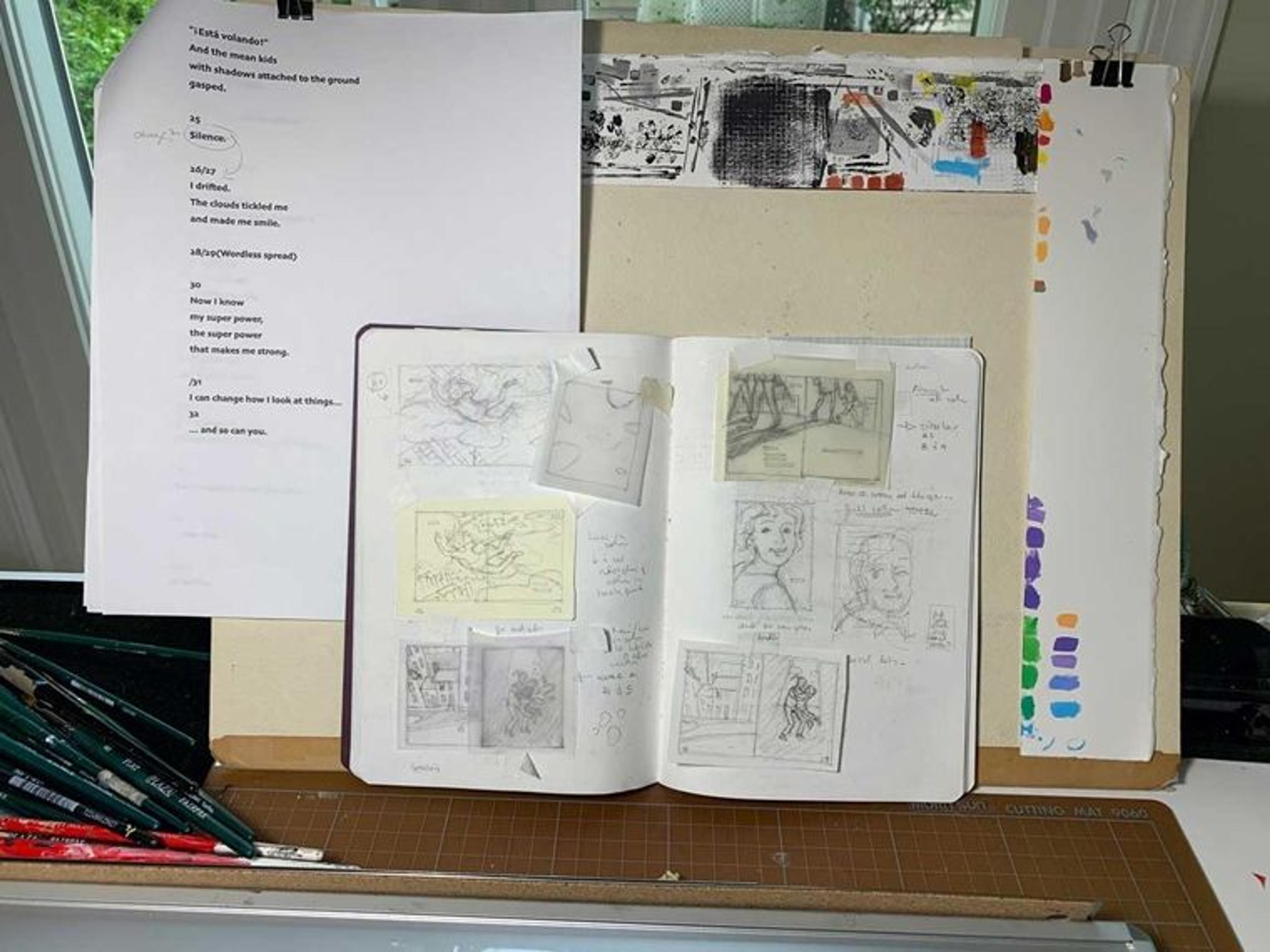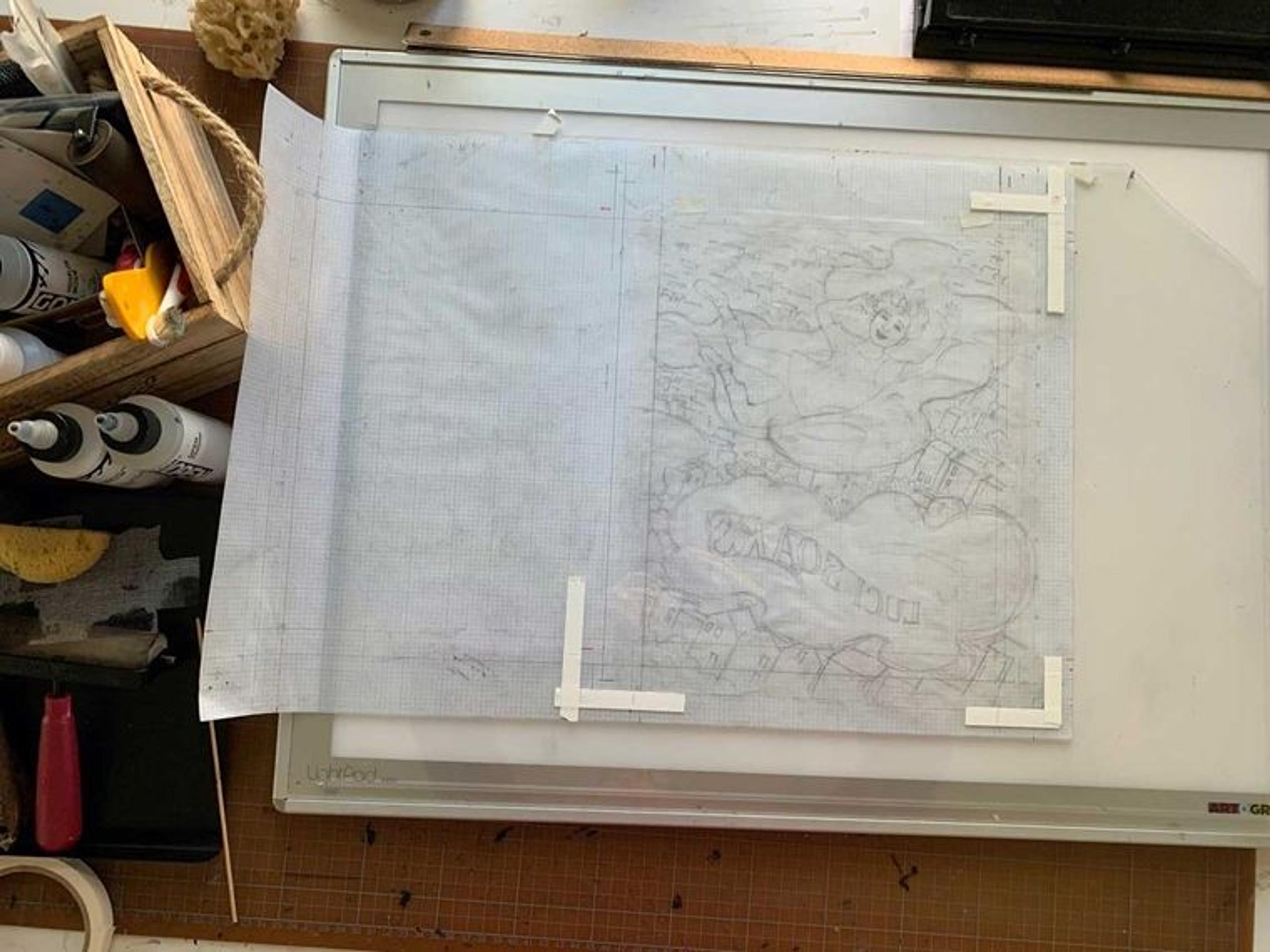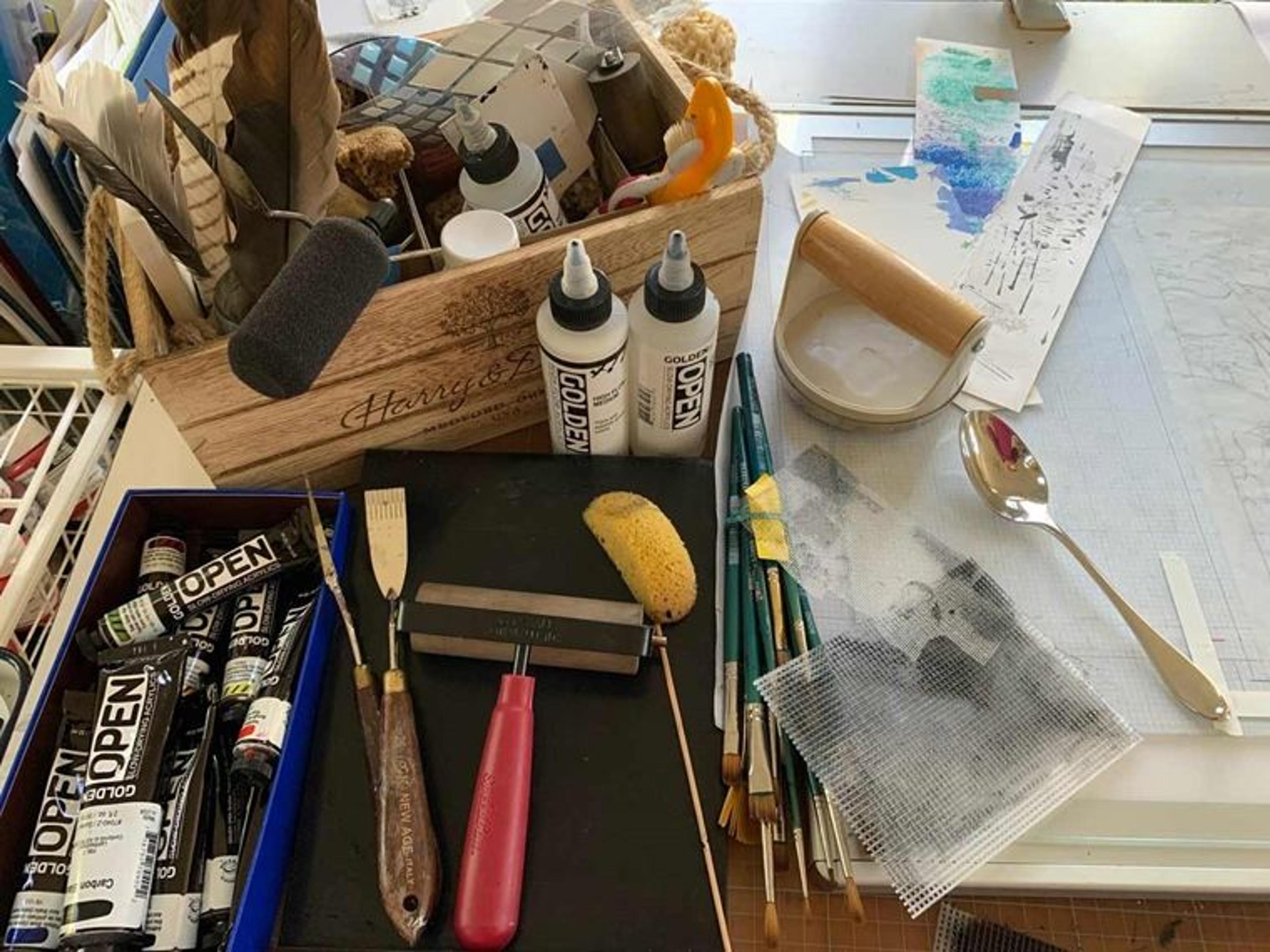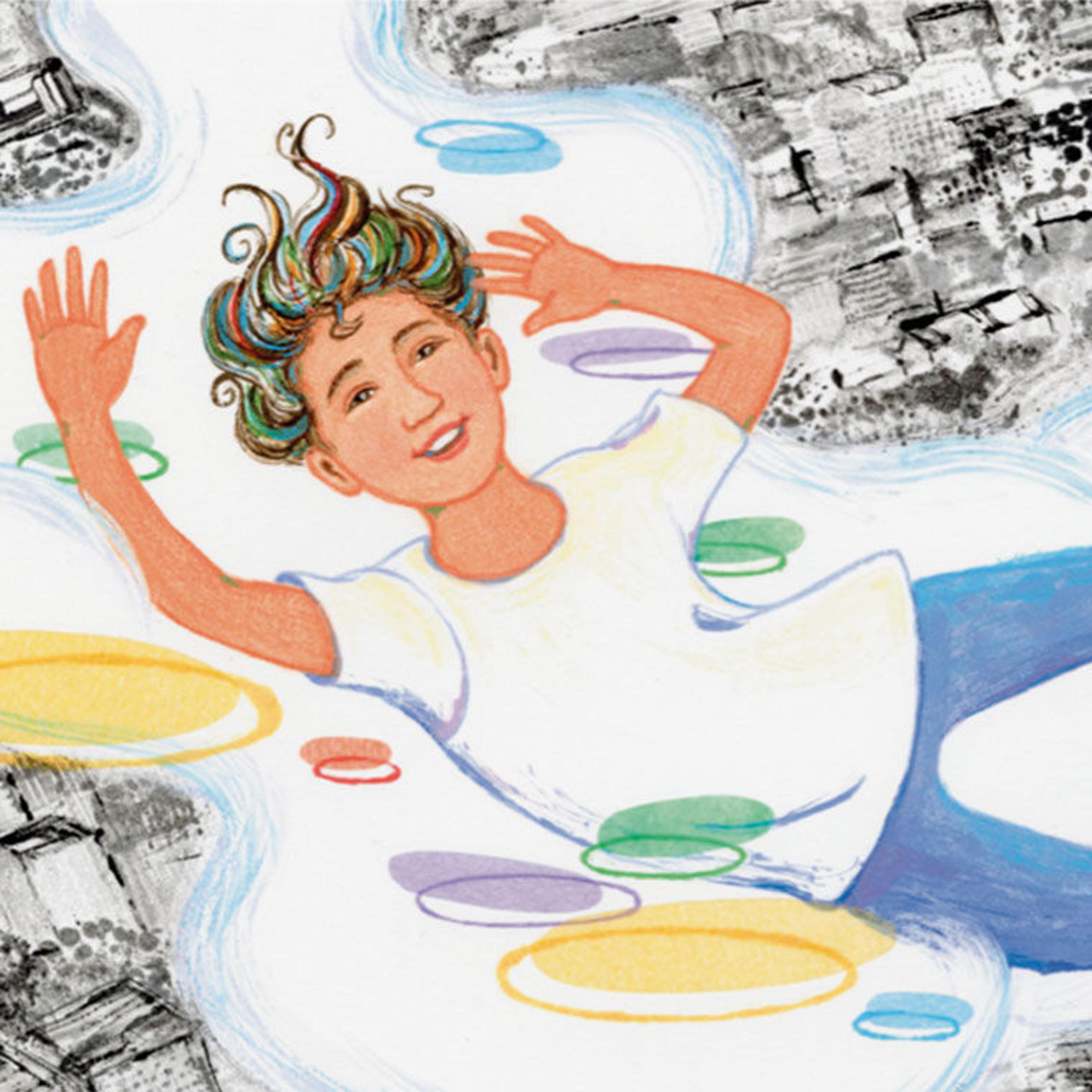
Lulu Delacre is a bilingual author, speaker, and illustrator of children's books. Throughout her career, she has written and drawn dozens of stories. Luci Soars, her most recent book, was inspired by the artist René Magritte. She decided to design the book's cover using a printmaking process called monoprint after seeing images by the artist Louise Bourgeois that were made using the same technique. While many artists use printmaking as a way to make many copies of a picture, monoprints are one-of-a-kind. Here, Lulu explains how she made her monoprint:
Creating a monoprint is a fun, messy, and exciting process that often brings unexpected results that may enhance the final art. I love this element of surprise. To create the monoprint for the cover of Luci Soars, I started with a small sketch.

Then I enlarged the sketch, drawing a more detailed version onto tracing paper. I flipped this drawing over and placed it on top of the graph paper set on my light table. Next, I covered the sketch with a piece of glass and painted on the glass surface using the sketch underneath as a guide. The final art is a mirror image of what I painted onto the glass.

I had registered the paper on the glass with tape. Registering means lining up each layer so everything is straight. The tape marked the spot where I needed to place the paper each time. Because I painted in thin layers the paint dried faster. so I used slow-drying acrylics to extend the drying time. Still, I had to work fast!

Before I started the cover illustration, I gathered all my materials. I planned much of the illustration in black and white, so I decided to enhance the image by creating textures. I have brushes and rollers to apply paint. I have sponges and screens to achieve textures. I have cotton swabs, toothpicks, and spatulas to remove unwanted paint from the glass surface. I use a baren (a disk-shaped tool used to make things flat), a spoon, or my own fingers to apply pressure to the paper and transfer the paint to it. By varying the amount of pressure I apply, I can somewhat control the amount of ink the paper will soak up.

I began making the illustration by painting with black acrylic paint to create a bird’s eye view of a city. I suggested buildings with square shapes that I made by using the straight edge of a thin tile. I blotted a sponge in thinned paint and onto the glass to create treetops.

After I finished my black and white arial view of a city, I wiped the glass clean. I had to be thorough: any black paint left on the glass surface could muddy a color layer since acrylic paints are water-based and mix very easily.

Sometimes you create shapes by not applying paint to the paper, like the clouds in this picture. It took me several hours to create this illustration since each color required a different layer.

Every time I look at the cover of Luci Soars, I remember how much fun it was to make. I found it thrilling not being able to predict exactly what I would find as I peeled the paper from the glass. You should try monoprinting, too!
Interested in making a print of your own? Click here to learn how to make your very own potato print!
Hey adults and older kids! Want to learn more about printmaking techniques? You can read more about different processes here.
All images courtesy of Lulu Delacre

